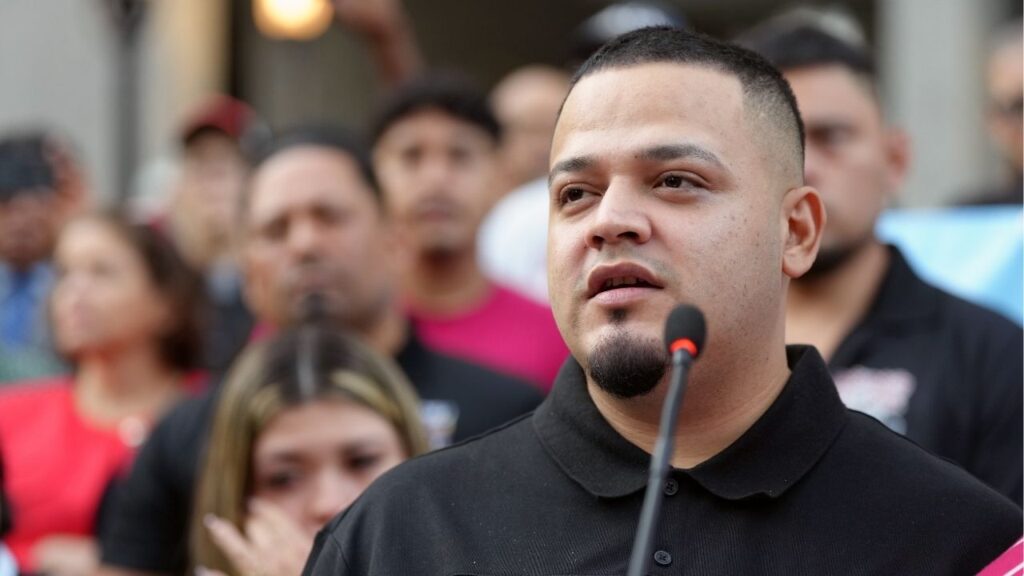Share
Clovis Unified and Central Unified trustees will vote next week on whether to put multimillion-dollar school bond measures on the March 3 ballot, the same ballot that will contain a $15 billion state facilities bond measure for California’s K-12 schools and public colleges.
Fresno Unified trustees say they also want a bond measure on the March ballot. But they haven’t yet decided how big it should be — and the clock is ticking.
Barring any hiccups, Fresno Unified officials say there’s still time to get a bond measure on the March ballot. Ballot language for all elections, including bond measures, must be received by the Fresno County Elections Office no later than Dec. 6.
Fresno Unified Superintendent Bob Nelson told GV Wire that the district has no time to spare: “We are behind the eight ball, compared to our colleagues.”
Local school bond measures require 55% voter approval to pass.
It Takes Money to Get Money
Why the rush?
The answer is Assembly Bill 48, which would provide $9 billion for K-12 schools and another $6 billion for colleges if voters approve it in March. Districts like Fresno that have been short-changed in the past could be in line for a bigger slice of the pie under the funding allocations spelled out in AB 48.
Unlike previous statewide state bonds for school facilities, AB 48 will prioritize project funding requests that involve health or safety hazards, financial hardship, severe overcrowding, and whether there is a project labor agreement included.
More than half of the K-12 bonds — $5.2 billion — will be designated for modernization, including $150 million for testing and remediation for lead in water supplies; $2.8 billion for new construction; and $500 million each for career technical education facilities and charter schools facilities.

Governor’s Goal is Equity in Education
Gov. Gavin Newsom’s promise of greater equity for California’s schools is encouraging to Fresno school officials, Quinto said.
“Obviously, we’re supportive of equity models that take into consideration the disadvantaged circumstances in which students live and deteriorating facilities,” she said.
Quinto estimates the cost for repairs, upgrades, and modernization of Fresno Unified facilities now is about $1 billion. But annual spending since 2005 has been about $60 million, she said, which is “not addressing the needs of the school facilities.”
Fresno Unified was the subject of an EdSource video in September on the impacts of inequitable state funding for school construction and improvements. EdSource reported that the district’s assessed property value per student is about one-fifth of the state average.
The video reported that since 1998 California school districts with the highest property values received eight times more funding than those with the lowest property values. Districts like Fresno, with aging schools that lack modern amenities and the latest technology, and with lower property values, are in need of a bigger share of state facilities money than they’ve been getting.
Fresno Unified’s assessed value “does not generate enough capacity in order for us … to match those state funding sources,” Quinto said. “We just don’t have as many resources in that regard.”
Districts that are newer or wealthier are in better position to have projects shovel-ready when state bond funds are available, and they don’t worry as much about hitting a debt capacity ceiling, she said.
“You’re looking at a district that might have had just one high school and now they have all that suburban growth, and they’re collecting all their developer fees, and their A.V. (assessed value) is skyrocketing,” Quinto said. “And so they’re able to issue a huge bond locally. Well, then they can just focus on that one historical high school and bring it up to brand-new standards because they have so many resources pouring into the district from their development.”
AB 48 Sets New Funding Priorities
Under AB 48, applications for state funds will no longer be processed on a first-come, first-served basis. The Office of Public School Construction will consider applications in four annual cycles and evaluate them by the established priorities. Under AB 48, state grants will pay a greater share of construction and modernization costs.
Fresno State has at least $300 million in deferred maintenance, and AB 48 is expected to provide around $100 million for the university if it passes, President Joseph I. Castro said recently to GV Wire

But public support for the statewide bond measure may be slipping. The Public Policy Institute of California conducted a poll in April that found 62% of adults and 57% of likely voters would vote yes for the bond measure. In the September poll, support by adults climbed to 66% but fell to 54% among likely voters. For likely voters, the September survey had a margin of error of plus or minus 4.2%. The measure needs 50% plus one vote to pass.
Education officials are hopeful that March’s ballot, which will include the Democratic candidates for U.S. president, could translate into more votes for school bonds.
Here’s how the Fresno-area school districts are preparing for that to happen.
Clovis Unified
District spokeswoman Kelly Avants said the district administration appointed 35 people to a citizens’ committee that began meeting in January and studied the district’s facility needs, growth plans for the cities of Clovis and Fresno, and Fresno County, the district’s finances, and projected student enrollment growth. The district’s financial adviser proposed several bond totals, taking into consideration the district’s facility needs that total more than $600 million.
Surveys of voters were conducted to gauge levels of support for bond measures of $311 million, which would maintain the existing tax rate of $155 per $100,000 but not cover the district’s needs, and $408 million, which would increase the tax rate by $25 per $100,000 of assessed value. The citizens’ committee wrapped up its work with a presentation to the trustees in July that recommended proceeding with the $408 million bond measure.
The trustees considered the $408 million bond measure at the Oct. 9 meeting and are scheduled at Wednesday’s meeting to vote on a resolution to put it on the March ballot. If the resolution passes, the district will ask the county Elections Office to designate Clovis Unified’s bond measure as Measure A, which has been used for Clovis Unified measures for many years.
2019 – Citizens Report Regarding Bond Measure from Clovis Unified School District on Vimeo.
Central Unified
District spokeswoman Sonja Dosti said Central Unified began discussions about a potential bond measure in late 2018. The district had a facilities master plan that was completed in June 2016 with input from the community, students, school staff, district administrators and board members that laid the groundwork for a multi-year bond measure project plan. The size of the bond measure was based on identified projects, estimated costs, and the district’s bonding capacity.
The bond adviser drew up a schedule for tasks, including a survey of voters that was completed in August. The survey showed strong support for bond measures of $110 million and $120 million. The larger bond would drive up property tax rates by $60 per $100,000 of assessed value — the maximum allowed under state law.
The trustees reviewed the bond measure proposal at the Oct. 8 board meeting and is scheduled to vote on the bond measure resolution at Tuesday’s meeting.
Fresno Unified
According to district officials, the first mention of a potential bond measure election surfaced at the April 12 special meeting when board president Claudia Cazares asked when money from the current bond measures (Q and X) would run out and how soon the board would need to consider reauthorization. Supt. Bob Nelson said that “probably the earliest” the board could consider a new bond measure would be 2022. The administration could schedule one sooner “if you’re willing to raise taxes.”
After the district’s financial adviser ran an analysis, the board voted at the June 12 meeting to award a $41,500 contract to FM3 Research to survey voters on potential bond measures. Board members did not ask to preview the bond measure survey questions when the contract was awarded.
The survey was administered in late August and delivered to the trustees in a board communication in mid-September. Chief operating officer Karin Temple told the board that the survey showed strong community support for $160 million and $240 million bond measures.
District Faces a Tight Schedule
But at the Oct. 2 board meeting, trustees expressed unhappiness that they hadn’t had the chance to vet the survey questions, noting that they would have asked whether voters would be willing to shoulder steeper tax bills for bigger bond measures if it meant better schools.
It was in stark contrast to the 2016 board’s statement to voters that they had purposely not sought a larger amount for the $225 million Measure X bond measure out of respect for taxpayers’ wallets.
Measure X Investment Priorities from Fresno Unified on Vimeo.
Current board members, however, said the $160 million and $240 million bond measures proposals wouldn’t make enough of a dent in covering the cost of building new schools and school improvements. The district’s Measure X projects list identifies about $266 million in unmet project needs.
The board decided to order a second voter survey to gauge voter support for bond measure proposals of $325 million and $500 million. On Wednesday the trustees voted 7-0 to pay FM3 an additional $35,000 for the second survey — but insisted on seeing the questions before it’s conducted.
Categories

Fresno County Firefighters Contain Reedley House Fire


















